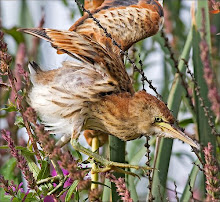
Kate Harker wades into the duckpond of Millais's Ophelia.
Both Pre-Raphaelite and Impressionism are my favourite styles of art. I prefer realistic scenes and subjects and particularly with John Everett Millais Ophelia, there is an ethereal quality evident that works well with the realism.
Even though people may not recognise or heard of the artist, they may well recognise another work of his originally entitled A Childs World, more famously known as Bubbles . Like many artists Millais’ paintings were not fully appreciated until after his death in 1896.
If asked why I liked Ophelia I would probably say because there is more to it than meets the eye. If art is to make an impression on the viewer, it has to mean something; the viewer has to relate to it in some way. It has to cause a reaction – even if it is controversial.
Ophelia was seen to have captured the very essence of what Pre-Raphaelitism stood for, its motto being that art should be as true to nature as possible. Hence, Millais spent many hours getting the surroundings just right on canvas, making it look as natural as possible. Even the flowers had symbolic meaning, for example, the red poppy representing sleep and death.
Even if I was not aware of, or had read the story of Shakespeare’s Hamlet, I would have been interested to know about the subject in the painting and the story behind this somewhat slightly morbid but peaceful scene. During the time that this was painted, the character of Ophelia was a popular subject for British artists, as Hamlet was considered to be the best of the tragedies. It fitted in well with the Romantic period and the ideas of spurned love, transgression and fallen women were popular in both literature and art. Millais portrayal of Ophelia however, was unconventional for the time.
Later in his career, Millais concentrated on children as subjects for his work. Bubbles was originally painted for his own pleasure and a lot of his work was copied for the increasingly popular fine art print market. He reluctantly sold the rights for this work and it became the focus of the Pears soap advertising campaign that it is now best known for.
Following this, Millais had to defend himself against the barrage of disapproval from art critics. It was thought that to front popular culture in order to be appreciated by the mass public, was to degrade oneself, to degrade art and would prevent Millais from being recognised along with the other distinguished artists of the time.
I particularly like Bubbles in that it captures the spirit and the time of being a child perfectly – the innocence, the blissful ignorance of life, yet an inquisitiveness to learn more about it. The colours used in the clothing and the background are dark so that the viewer is drawn more to the pale face and those curious dark eyes.
Such paintings as these and others by the Pre-Raphaelite artists capture life as it was. Even though Millais was reluctant and criticised for letting his work be used as a mass media piece, through it, it has reached a much wider audience than it may have otherwise done. Looking beyond the paintbrush and paintings themselves can reveal so much more about the artists and the times they lived in.
In tying Millais rather unconventional portrayal of Ophelia in connection with Von Hagens modern art form, I consider both to be intriguing, in different ways. Not to go against my previous words about this art form, I find Von Hagens technique is original and the controversy surrounding the whole technique is sure to keep it in the public eye for some time. Hence it has achieved its purpose. However, I find preserving ‘life’ through art in the more traditional way on canvas, more pleasing to the eye. Call me old fashioned but having seen the original Ophelia in the Tate gallery, give me a paintbrush over plastination any day.
Completed with reference to the text by Riding C, John Everett Millais.

No comments:
Post a Comment